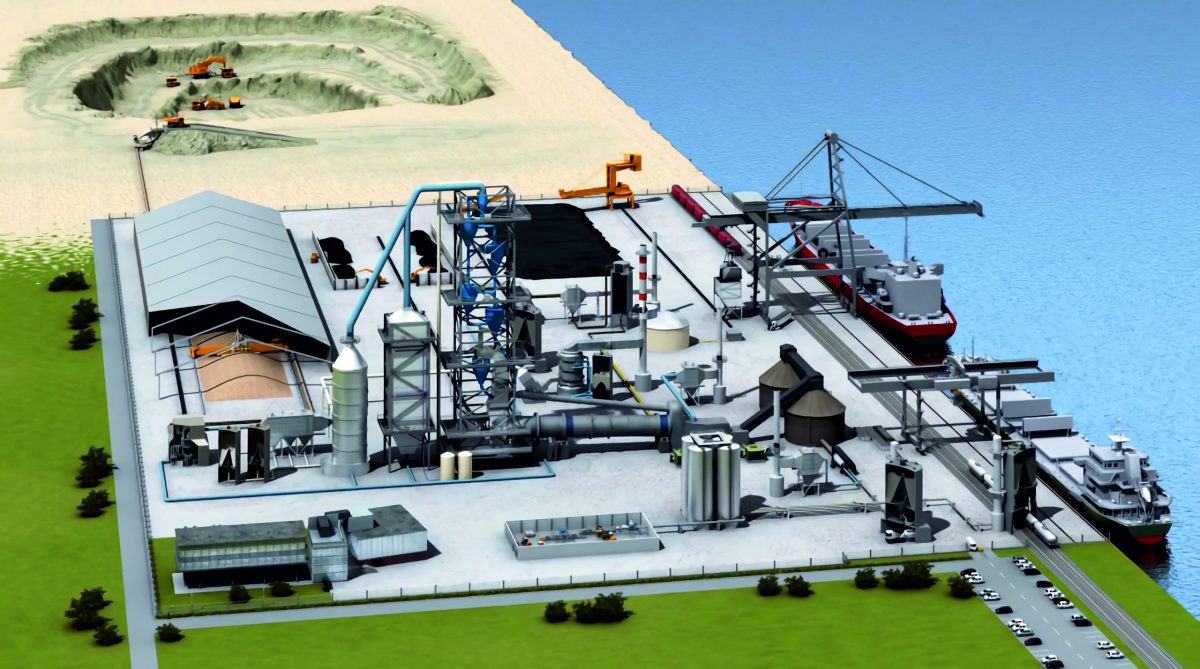
Heidelberg Cement AG in Lengfurt, Germany, needed a solution for the accurate metred supply of secondary material on its conveying system. Subsequent to a plant conversion, the original conveyor was repurposed and measures to ensure compliance with the defined clinker mineralogy process had to be undertaken. For defined clinker, the output values of the installed measurement technology must be absolutely reliable to ensure correct cement properties.
It is nigh impossible to identify the mass flow of material on a conventional belt scale. In this instance, the conveyor belt is only 600 mm wide and the belt loading system a few centimetres high. To install a belt scale would be time consuming and cost-intensive, as well as requiring large mechanical modifications. To accurately measure the clinker conveyed, Heidelberg Cement opted for the SICK Automation Bulkscan® LMS551.
The scanner is mounted above the conveyor belt, so separating the belt to install belt scales is unnecessary, and it can be installed while the conveying system is in operation. “This translates to zero downtime while the installation is conducted,” points out Grant Joyce, Head of Marketing, SICK Automation Southern Africa.
How it works
The non-contact, laser-based volume measurement system above the conveyor belt provides an exact overview of the transported quantity. Using the proven 5-echo pulse technology, the laser volume flow meter generates a reliable flow signal using the laser’s time of flight and belt speed. The technology filters out interfering echoes caused by dust, fog, glass or precipitation, delivering reliable measurement results. In addition to the volume flow, the sensor delivers the mass flow in combination with the material density, regardless of belt speed or type of bulk material transported.
The Bulkscan® LMS511’s integrated detection function for centre of gravity, material height and belt drift contribute to optimal operation of the conveyor belt and the associated reduction in downtime. “Even falling bulk material cannot harm the sensor due to its position over the conveyor belt,” Joyce explains.
A fit-for-purpose solution
“The solution exceeded customer expectations,” Joyce concludes. “The exact measured values of the laser scanner transmitted to the control room ensure precise control of the dosage in the interface. The smooth, optimal production process saves a huge amount of work, time and money, and maintenance requires less than one hour annually.”
In the cement industry, SICK Automation’s focus is finding solutions for production processes involving challenging measuring tasks when extracting raw materials, processing fuel, monitoring the pyro process, and when continuously monitoring emissions.
Sick offers customer-optimised sensor solutions with measurement technology, system integration and data evaluation from a single source. This is SICK.
More news
- PART 2: CONCRETE IN THE DESIGN OF A UNIQUE LUXURY HOME IN GEORGE, SOUTH AFRICA
- PART 1: CONCRETE IN THE DESIGN OF A UNIQUE LUXURY HOME IN GEORGE, SOUTH AFRICA
- MVULE GARDENS, AFRICA’S LARGEST 3D-PRINTED AFFORDABLE HOUSING PROJECT
- PART 3: HARNESSING THE POTENTIAL OF HIGH SULPHUR FLY ASH IN CONCRETE PRODUCTION
- PART 2: HARNESSING THE POTENTIAL OF HIGH SULPHUR FLY ASH IN CONCRETE PRODUCTION

